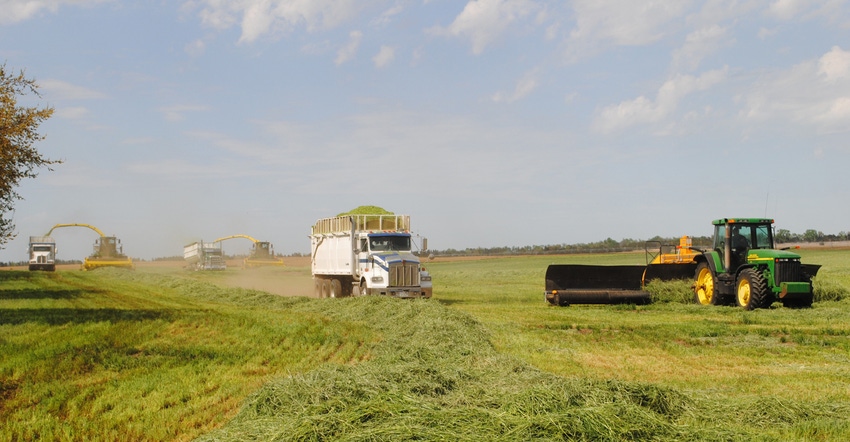
Silage is a big deal in Nebraska. While about 260,000 acres of corn produced nearly 5 million tons of corn silage in the state in 2020, haylage that excluded alfalfa was harvested from 1.89 million acres and produced about 3.16 million tons of forage on a dry basis.
This year’s Silage for Beef Cattle Conference, set for March 17 at the University of Nebraska Eastern Nebraska Research, Extension and Education Center in Mead, recognizes the importance of silage made from small grains.
The conference, which is also available virtually, is free to producers, nutrition consultants and Extension staff. Running from 8:30 a.m. to 4 p.m., it is sponsored by Nebraska Extension, Lallemand Animal Nutrition and the Iowa Beef Center.
Talking silage
The event begins at 8:30 a.m. with a welcome from Kip Karges, technical services with Lallemand. Early-morning sessions include a workshop on agronomic management of small-grain silages by Daren Redfearn, Nebraska Extension forages specialist; and a session on balancing when to harvest small-grain silage, presented by Mary Drewnoski, Nebraska Extension beef systems specialist.
Late-morning workshops include “What to do with limited water: sorghum silage,” presented by Renato Schmidt, technical services with Lallemand; and “Why is fermentation analysis important and what could it mean for your operation?” presented by John Goesner with the University of Wisconsin-Madison and Rock River Laboratory.
After lunch, Becky Arnold, custom harvest development manager with Lallemand, talks about the fundamentals of silage harvest management; and Limin Kung, University of Delaware, discusses inoculants for small-grain silage.
The day concludes with a session on “Economics and ROI on quality forage in grower and finishing rations,” presented by Jhones Sarturi from Texas Tech University; and a panel discussion about making small-grain silage work, moderated by Dan Loy from Iowa State University.
Register for this event by March 2, or learn more at beef.unl.edu.
About the Author(s)
You May Also Like






